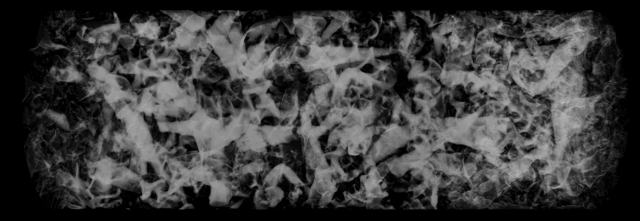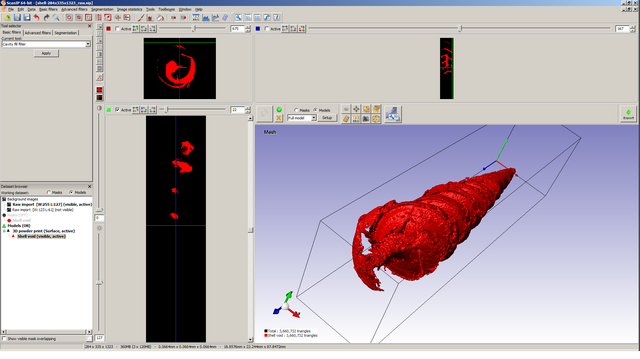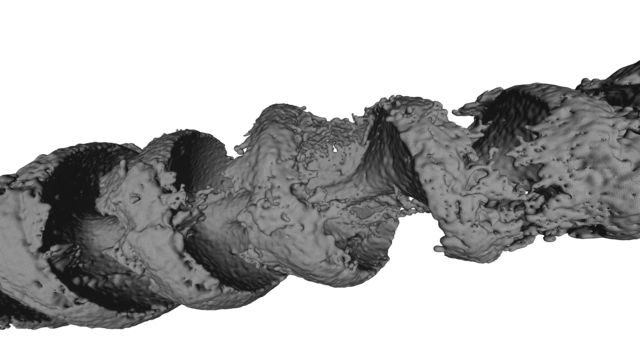
μ-VIS X-ray Imaging Centre
Multidisciplinary, multiscale, microtomographic volume imaging at Southampton
Example

Simon Ryder1, Richard Boardman2, Mark Mavrogordato2
1artnucleus.org; 2μ-VIS X-ray Imaging Centre, Faculty of Engineering and the Environment, University of Southampton
In this project for the Isle of Portland in Dorset, the artist was looking to use contemporary technology to complete a geological process that was started in the Jurassic: the creation of a pseudomorph - a form that has maintained its original shape but with a substituted material. In this case, a small snail, a Portland Screw, fell to the seabed in the Jurassic, becoming covered in sediment. The animal rotted away and the internal space became filled with sand. Over millions of years this became a fossil; the shell was then dissolved away by water seeping through the rock, leaving an airspace.
Using large-scale, high-power CT scanning facilities at the μ-VIS X-ray Imaging Centre [1], the inside of the rock was made visible and the airspace meshed with a view to creating a 3D print via rapid prototyping methods, to be exhibited alongside the stone from which it came [2].

Once reconstructed, the CT dataset of the rock was analysed to isolate a single pseudomorph from hundreds of potential candidates. The target for meshing was to create something faithful to the originally isolated pseudomorph void. To this end, a detailed mesh was generated. As only a surface mesh is required for this rapid prototyping machine, we generated an STL file matching the boundary between the airspace and the rock.

The rapid prototype created from the STL input generated by Simpleware was printed several times larger than the original CT scan data to allow for a more mesoscopic model. The model, printed from epoxy-fixed powder, is now on display at the London 2012 Cultural Olympiad by the Sea [3].

The whole process of the commission can be seen at [2]. Pseudomorph by Simon Ryder for Exlab 2012, mesh by Dr Richard Boardman from a CT scan by Dr. Mark Mavrogordato of the University of Southampton is © Simon Ryder.